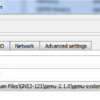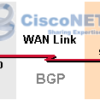Random Early Detection (RED) is a congestion avoidance mechanism that takes advantage of TCP’s congestion control mechanism.
When it comes to Quality of Service, there are 2 separate approaches. The first is congestion management, which is setting up queues to ensure that the higher priority traffic gets serviced in times of congestion. The other is congestion avoidance, which works by dropping packets before congestion on the link occurs.
RED takes a proactive approach to congestion. Instead of waiting until the queue is completely filled up, RED starts dropping packets with a non-zero drop probability after the average queue size exceeds a certain minimum threshold. A drop probability ensures that RED randomly drops packets from only a few flows, avoiding global synchronization. A packet drop is meant to signal the TCP source to slow down. Responsive TCP flows slow down after packet loss by going into slow start mode.
Reference: ‘IP Quality of Service’ from, Cisco Press



 The www.ipBalance.com runs by a volunteer group with IT professionals and experts at least over 25 years of experience developing and troubleshooting IT in general. ipBalance.com is a free online resource that offers IT tutorials, tools, product reviews, and other resources to help you and your need.
The www.ipBalance.com runs by a volunteer group with IT professionals and experts at least over 25 years of experience developing and troubleshooting IT in general. ipBalance.com is a free online resource that offers IT tutorials, tools, product reviews, and other resources to help you and your need.

![[Splunk] – Basic search fields and commands logo_splunk.png](https://ipbalance.com/wp-content/uploads/2009/06/logo_splunk-100x80.png)


